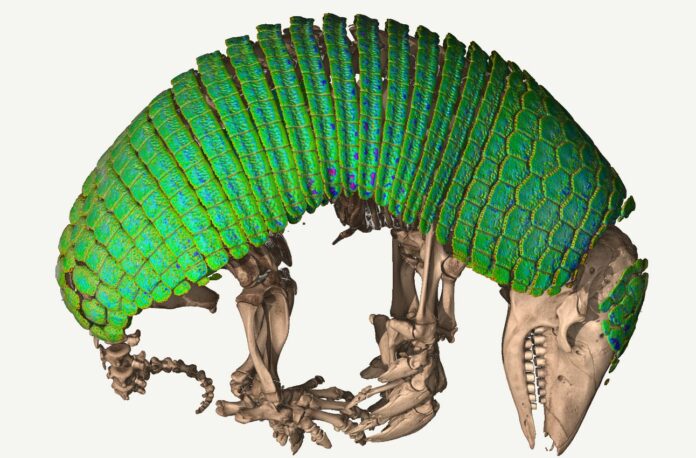Mammals exhibit a unique characteristic when it comes to their skeletal structure. Instead of possessing the bony plates and scales seen in crocodiles, turtles, lizards, dinosaurs, and fish, mammals diverged from their ancient suit of armor and evolved to develop a covering of insulating hair.
While Armadillos have been traditionally regarded as the sole exception, boasting a flexible and safeguarding shell made of imbricated bone, a recent study published in the journal iScience has unexpectedly shed light on another remarkable case. African spiny mice, previously overlooked, were found to produce similar structures beneath the skin of their tails.
The revelation came to light through routine CT scanning of museum specimens conducted as part of the openVertebrate program. This initiative aims to furnish researchers, educators, and artists with 3D models of vertebrate organisms, and it unveiled this astonishing discovery regarding African spiny mice.
Co-author Edward Stanley says he “was scanning a mouse specimen from the Yale Peabody Museum, and the tails looked abnormally dark.”
He initially assumed the discoloration was caused by an imperfection introduced during the specimen’s preservation. But when he analyzed the X-Rays several days later, Stanley observed an unmistakable feature he was intimately familiar with.
At first, he presumed that the changes in coloration resulted from an anomaly that had occurred during the specimen’s preservation process. However, upon examining the X-ray images several days later, Stanley noticed a distinct characteristic that he recognized all too well.
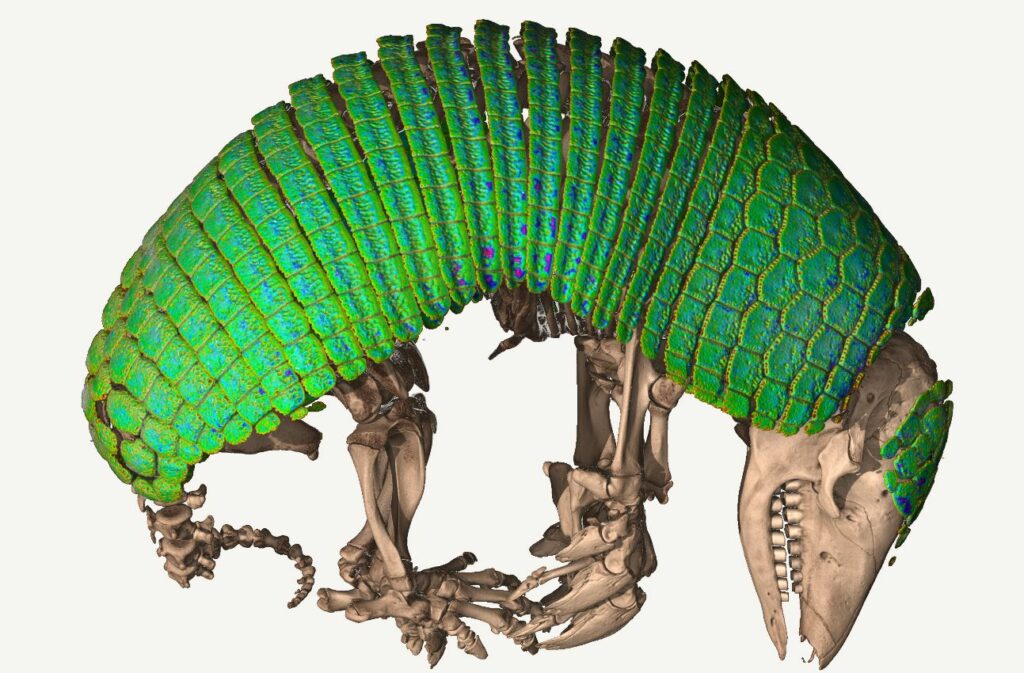
“My entire PhD was focused on osteoderm development in lizards. Once the specimen scans had been processed, the tail was very clearly covered in osteoderms.”
Spiny mice osteoderms were previously documented by German biologist Jochen Niethammer, who made an intriguing comparison between their structure and medieval stonework in an article from 1975. Niethammer correctly identified these plates as a form of bone, but unfortunately, he did not pursue further investigations, leading to the group’s neglect for several decades. However, the scientific community’s attention was reignited when researchers stumbled upon another remarkable characteristic of spiny mice that appeared unrelated.
In 2012, a study published in Nature revealed that spiny mice possess the remarkable ability to regenerate injured tissue completely, without leaving any scars. This regenerative capacity, commonly observed in reptiles and invertebrates but previously unknown in mammals, was accompanied by an unexpected fragility of their skin. Spiny mice’s skin tears with only a quarter of the force required to injure the skin of a typical mouse, yet they can heal twice as fast as their counterparts.
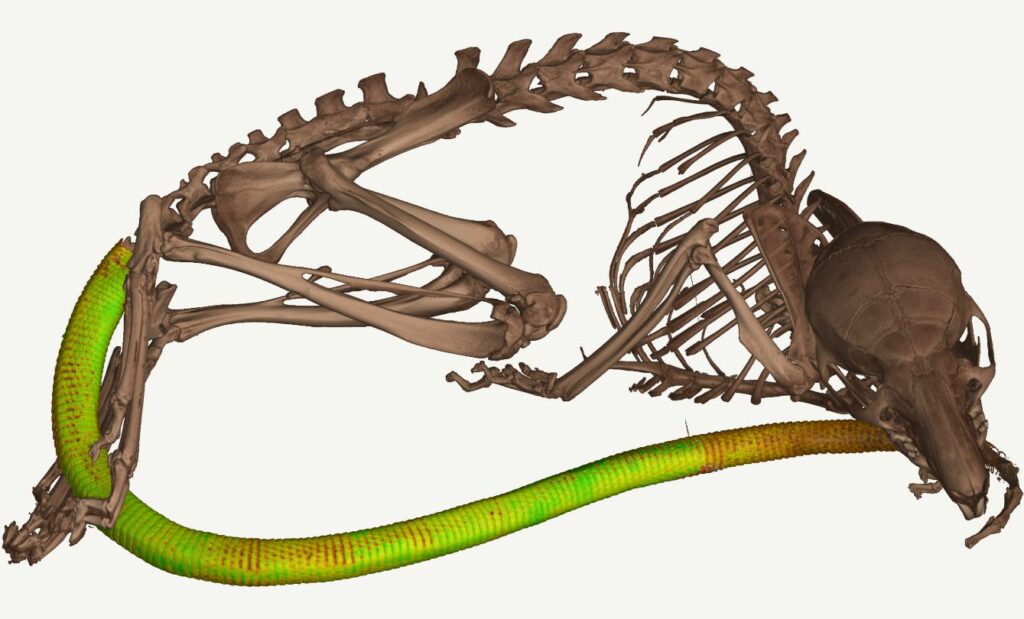
Driven by the desire to uncover a potential model for human tissue regeneration, scientists have embarked on the task of unraveling the genetic pathways responsible for the extraordinary healing powers of spiny mice. Among these researchers is Malcolm Maden, whose laboratory coincidentally resides in the same building as Stanley’s office.
“Spiny mice can regenerate skin, muscle, nerves, spinal cord,” adds lead author Maden, “and perhaps even cardiac tissue, so we maintain a colony of these rare creatures for research.”
Maden and his coworkers examined the osteoderm development of spiny mice.
Their findings confirmed that these osteoderms were indeed similar to those found in armadillos, but they had likely evolved independently. It is important to note that osteoderms are distinct from the scales of pangolins or the quills of hedgehogs and porcupines, as they are composed of keratin, which is the same tissue that makes up hair, skin, and nails.
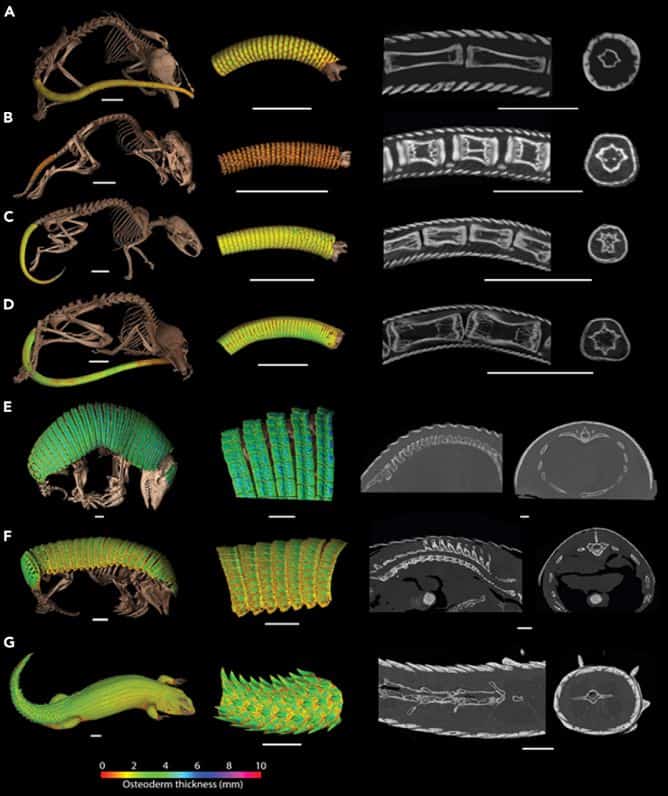
The subfamily Deomyinae consists of four genera of spiny mice. Despite similarities in their DNA and potentially the shape of their teeth, scientists have been unable to identify a single distinguishing feature shared among species in this group that sets them apart from other rodents.
Stanley, suspecting that the differences among spiny mice might be superficial, conducted further analysis by scanning additional museum specimens from all four genera. His investigations revealed that the tails of spiny mice were covered in a consistent sheath of bone. Gerbils, which are the closest relatives of Deomyinae, lacked such osteoderms. This suggests that the trait likely evolved only once, in the ancestor of the seemingly unrelated spiny mice.
The widespread presence of osteoderms in this group strongly indicates their important role in protection. However, the specific function of these osteoderms was not immediately apparent due to another peculiar attribute of spiny mice: their tails are unusually detachable. Tail loss is so prevalent in certain spiny mouse species that nearly half of the individuals in a given population have been observed to lack tails in the wild.
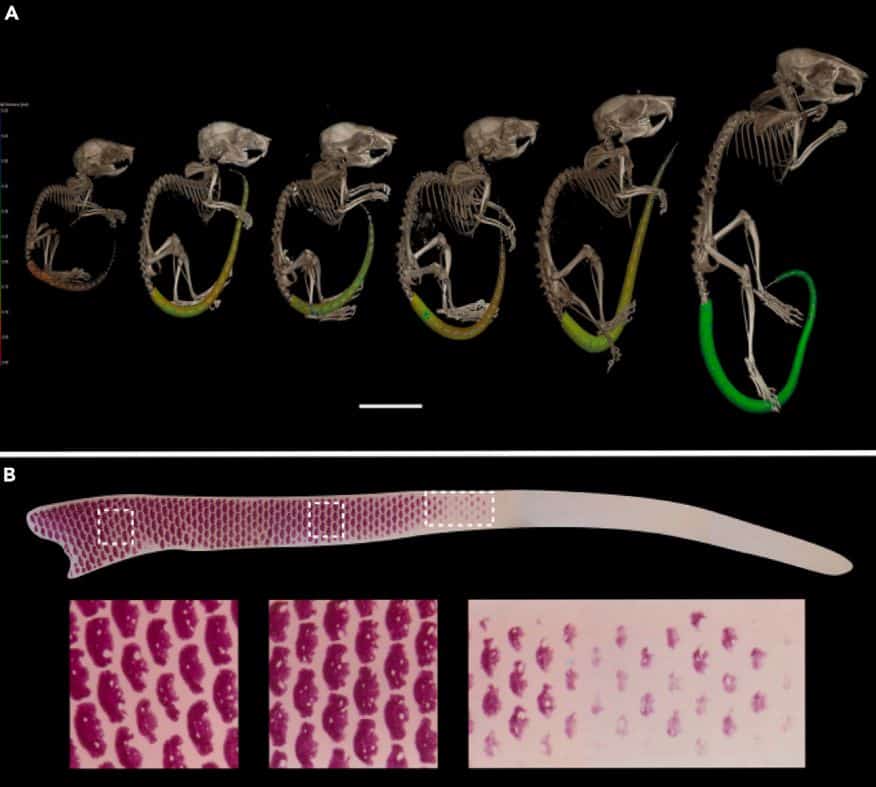
“This was a real head-scratcher,” Stanley adds. “Spiny mice are famously able to deglove their tails, meaning the outer layer of skin comes off, leaving behind the muscle and bone. Individuals will often chew off the remainder of the tail when this happens.”
In spite of their remarkable regenerative abilities, spiny mice can only execute tail shedding once. Unlike certain lizards, these mice are unable to regrow their tails, and the process of tail separation is not always effortless.
To comprehend why rodents that appear indifferent about retaining their tails would go through the effort of encasing them in armor, the researchers turned to a peculiar group of geckos called fish-tale geckos, which hail from Madagascar. While most geckos lack osteoderms (bony deposits in the skin), fish-tale geckos are adorned with thin, overlapping plates. Similar to spiny mice, they possess incredibly delicate skin that sheds at the slightest provocation.
According to Stanley, it is possible that the osteoderms in fish-tale geckos and spiny mice serve as a form of escape mechanism.
“If a predator bites down on the tail, the armor might keep the teeth from sinking into the tissue beneath, which doesn’t detach,” he adds.
The mouse’s outer skin and the accompanying bone plating detach from its tail in response to an attack, enabling the mouse to swiftly flee from danger.
Image Credit: Edward Stanley
